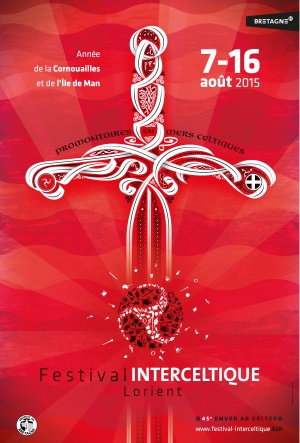
Press Release from Culture Vannin:
It's a huge year for the Isle of Man at Europe’s largest Celtic festival, Festival Interceltique Lorient in Brittany this August. Sharing the status of ‘honoured nations’ with fellow Celtic nation, Cornwall, this is the first time that the Isle of Man has been the main focus of the 45 year old festival. Isle of Man volunteer delegate, Ealee Sheard, has been working with the main financial supporter on the Island, Culture Vannin, to prepare an impressive showcase of all things Manx. IOM Arts Council has also provided a grant to ensure that the presentation is of the highest quality. The majority of the funding for the performers is coming from the Festival’s own budget and the whole presentation is a partnership between the Isle of Man and Cornwall.
A delegation of over 100 musicians & dancers will represent the Isle of Man, including Barrule, Ny Fennee, Ruth Keggin, Rushen Silver Band, Caarjyn Cooidjagh, Russell Gilmour, Strengyn, Mec Lir and many others. Attracting over 800,000 visitors and 325 journalists from all over Europe, the 2015 festival will centre around a pavilion and stage presented by the Isle of Man and Cornwall. Key events are televised to millions across France. Peter Young from Event Management Solutions is managing the pavilion presentation for Culture Vannin, and has been working with the Cornish delegation to design a venue which will represent both the unique and shared qualities of our two nations through food and drink, culture, heritage, language, arts and crafts, and tourist information. The pavilion stage will have a packed schedule of Manx and Cornish acts, some of which will also be involved in officially programmed performances in other festival venues. There will be two major Manx/Cornish gala events in the Grand Theatre and Espace Marine, and a featured segment within the popular Nuits Interceltiques – an extravaganza of music, dance, film and fireworks. The Festival committee has also planned a TT themed event, which will attract riders from the region, so a really broad cross-section of Manx culture will be promoted. Angela Byrne, Head of Tourism, visited the festival last year:
Just walking around the festival, it’s the energy, it’s the whole eclectic mix of so many different nations that have come together under a common theme – it’s fantastic, I’ve never been to anything like it!